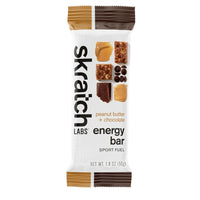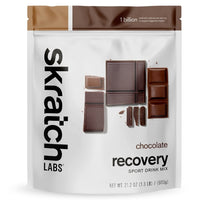Rene Decartes was the first philosopher to argue for the concept of dualism: the mind and the body acting as separate entities. Like many in the scientific community, we can argue against Decartes' 17th century proposal on the uncoupled view of body and mind. There is a breadth of scientific evidence to support how the brain and body live in constant dynamic equilibrium, responding to and probing one another. This may be why many common idioms for emotions have some description of bodily sensation (eg “Makes my skin crawl”).
Exercise and sport is no boundary for the vast interconnectedness of brain and body; in fact, your brain and exercise are inexorably functionally tied. There is a growing field evaluating the Neuroscience of Exercise: how exercise can induce changes in certain neurobiological mechanisms. Given this irrefutable link, it only makes sense that we dive into your brain on exercise.
Your Brain Controls How Your Body Shows up During Exercise
Exercise does not take place from the neck down. In fact, your brain prepares and responds to physical exertion to make sure your body has what it needs to… ehem… go the extra mile.
In response to the onset of exercise, the hypothalamus, a small region of the brain, sends out chemical messages to raise heart rate, blood pressure, respiratory rate, and sweat rate. These mechanisms ensure adequate blood flow to active tissues, elimination of metabolic byproducts, and regulation of body temperature. Without your brain listening to your body at the beginning of exercise, you would likely bonk, overheat, and go into an acidotic state (a build-up of metabolic byproducts in the blood making blood more acidic and causing nausea, vomiting, stroke, and eventually death).
How Does Exercise Affect the Brain?
We hear often that exercise is beneficial, and sometimes necessary, for our cardiovascular and metabolic health, but what doctors don’t commonly gab about are the myriad of positive effects that exercise has on your brain. Exercise can positively influence both structure and function of the brain, extending to mood and mental health, neurodegeneration, and memory and cognition. So how exactly does this miracle cure enhance your brain and mind?
Exercise and Mental Health
You may have caught wind of the positive mental effects of physical exercise. Specifically, physical activity has been shown to diffuse symptoms of anxiety and depression- and you don’t have to have an official mental health diagnosis for exercise to alleviate state dependent symptoms of anxiety and depression (22).
Exercise alters your neurochemistry both acutely and chronically. Anxiety and depression are associated with aberrant levels of serotonin, dopamine, and norepinephrine 14,24. Both acute and chronic exercise are shown to modulate levels of these very same neurotransmitters, leading to more positive feelings, reduced anxiety, and alleviation of depression. In fact, exercise has been shown to be just as effective a treatment as pharmaceuticals for certain mental health conditions (24). The alleviation of depression and anxiety symptoms that exercise offers is thought to be related to enhancing serotonin and norepinephrine as well as regulating dopamine levels (22, 24, 26). Additionally, though exercise is an acute stressor that transiently raises blood cortisol levels, exercise overtime reduces resting cortisol levels, associated with lower levels of anxiety and depression.
What’s more, exercise has been shown to raise levels of neurotrophic factors both chronically and acutely (5, 2)2. Elevated levels of brain-derived neurotrophic factor (BDNF) have been associated with the alleviation of symptoms of mental illness (19). Neurotrophic factors may be able to ameliorate mental health symptoms as these signaling molecules protect neurons, aid in their daily functioning, and promote the growth and connection of new neurons (8, 22, 23)!

The Other Side of Exercise and Mental Health
We cannot discuss the positive mental health effects of exercise without touching on the converse.
Anything that can alter neurochemistry can become addictive (19), and exercise addiction (also termed dependence, compulsion, obligatory, or abusive exercise ) is a real thing- especially in athletic populations (22). The mental health benefits of exercise only hold true to a point, and when overtraining takes place, the mental health effects are quite deleterious.
Exercise dependence is difficult to diagnose especially as exercise is considered to be quite healthy for the brain and body. Especially in endurance athletes, there can be a fine line between commitment and compulsive addiction. In fact, of all sports that have been studied, endurance sports seem to have the highest risk of addiction (19). A theory which partially explains this relates to the endorphins (binding to opioid receptors) and endocannabinoids which are released in response to endurance work (19, 21, 22, 28).
The neurochemical mechanisms of exercise addiction are not well understood or studied, though it is known that the primary risk factor for exercise dependence seems to be using exercise as a means to stave off negative emotions 30. There is a breadth of evidence documenting the psychological detriments of compulsive exercise. For one who has an exercise dependence, abstaining from exercise can lead to guilt, anxiety, bad mood, and body dysmorphia. In addition, exercise in the form of dependence is often used to escape these (and other) negative emotions (2,1 9, 22, 30). Interestingly, excessive training can also lead to learning and memory impairments as documented in animal studies (12).
Exercise compulsion is often coupled with overtraining: training without adequate rest or food. Roughly 60% of professional runners have experienced psychological symptoms of overtraining throughout their career (22). There are many different hypotheses regarding the origin of neurobiological changes associated with overtraining and exercise addiction. One hypothesis states that overtraining can lead to systemic inflammation and hypersecretion of inflammatory signaling molecules linked to depressed mood and fatigue of the nervous system. Additionally, alterations in serotonin have been hypothesized to play a role in mood changes associated with overtraining. What’s more, changes in the autonomic nervous system (regulating heart rate, gastrointestinal function, and respiration) and the Hypothalamic-Pituitary-Adrenal axis (secreting cortisol) are likely culpable, though more conclusive research should be done here (13).
What we do know for sure is that too much exercise can affect your mood and brain in a negative way. So take it easy, rest up, eat plenty, and connect with friends and family in hard times (additional information and resources).
Neuroprotective Effects of Exercise
In addition to the mental benefit of physical activity, acute or regular exercise also elicits a strong neuroprotective effect. Simple mechanisms– like increased blood flow to the brain– contribute to these changes as well as more complex chemical alterations that protect your neurons, prolong their life, and even begin to bud some newbies. All of this neuroprotection set into motion by exercise can lower your risk of developing neurodegenerative diseases (7, 18, 22, 34).
Remember BDNF from before? BDNF is just one of a class of chemicals increased by both acute and chronic exercise called neurotrophic factors. As we stated above, neurotrophic factors promote survival and development of neurons, this can protect your noggin from normal age related cognitive decline, as well as traumatic brain injuries! One of the most significant ways to increase BDNF via exercise is high intensity interval training workouts (HIIT) (14, 27).
Neuroprotective mechanisms of exercise have been documented to enhance memory and learning (9, 22). Exercise, specifically HIIT exercise, raises BDNF levels in the hippocampus, this change is associated with a greater ability to remember things like vocabulary and procedural memories (how to do things) after a bout of exercise (10). In addition, chronic exercise can actually enhance the volume of grey matter in the brain– the stuff that allows you to control mood, memory, and emotion (15). What’s more, animal studies have shown that exercise is associated with upregulated genes coding for synaptic plasticity in areas of the brain important for learning and memory (17). Basically, exercise can enhance the efficacy of signaling which in turn helps you remember and learn more!
As a bit of an aside, if you’ve been taking NSAIDs like your life depends on it and attempting to avoid any inflammatory foods, know that inflammation (to an extent) is a very necessary part of your body’s adaptive process: some of the neurogenic and plasticity effects of chronic exercise may be mediated by the pro-inflammatory pathways that it triggers (16, 22, 29).
It is important to note that chronically high levels of cortisol can cause damage to neurons (25). In this way, exercise’s ability to steady resting cortisol values also serves as an effective neuroprotective mechanism.

Outdoor Exercise has a Compound Effect
If you didn’t think the benefits of exercise could get any better, we are happily here to prove you wrong. Maybe while you are reading this, you can walk to the nearest greenery, take a deep breath in and see for yourself: getting outside while you exercise is one way to enhance most of the aforementioned effects.
When exercising in an enriched outdoor environment as compared to indoors, the psychological benefits of exercise are enhanced. This means greater changes in mood, better memory, as well as more positive engagement and ease in achieving a flow state (11, 31). Exercise outdoors also has a restorative quality which enhances feelings of wellbeing and leads to higher adherence to exercise in general (11). Even professional athletes feel more revitalized, less hostile, and less fatigued following outdoor activity as compared to indoor activity (31). What’s more, exercise in an enriched environment has led to augmented neurogenesis within the hippocampus in mice (6) potentially explaining the significant positive effects on learning and memory following outdoor exercise. While mechanisms for the compounded effect of outdoor exercise need to be more clearly explored, there is clear evidence that supports its benefit over indoor exercise.
This enriched outdoor environment is speculated to provide neurological benefits through smells, sounds, and sights (1) . It is well known that in addition to these theorized mechanisms, Vitamin D provides one of the greatest benefits of being outdoors. Many athletes (and people) are Vitamin D deficient. Beyond commonly cited effects of adequate levels of the sunshine vitamin, Vitamin D has been shown to enhance musculoskeletal performance as well as different hematological variables that enhance VO2 max (32, 33). Oh and it also has important implications in mood and cognitive capacity (33). So, go outside!
Many athletes spend much of the winter training season on a stationary bike or treadmill indoors- logging miles but going nowhere due to weather conditions. If this sounds like you, never fear! It’s always great to keep training up in whatever way is convenient, and there are plenty of ways to maximize indoor training. However, if you have the chance, the empirical evidence suggests that for your own sake, and the sake of your cognitive performance (strongly linked to athletic performance 22), it may be worthwhile to step outside and smell the roses. Maybe try trading your indoor Zone 2 ride for a bundled walk, and feel the reward seep into your sun-kissed skin (and brain). If it’s pretty chilly outside, make sure to read up on how to maximize your hydration, safety, and performance in the cold.

Photo: Talbot Cox Athlete: Gwen Jorgensen
The Takeaway?
As with most things in life, too much of anything can always cause some harm, so find your balance and go easy on yourself. Exercise is awesome for your mental health, memory, and markedly reduces your risk of neurodegenerative diseases; and most of these effects are compounded if you take it outside! Now that we have covered that, maybe go for a quick walk, run, or ride to let it all sink in.
References:



















































